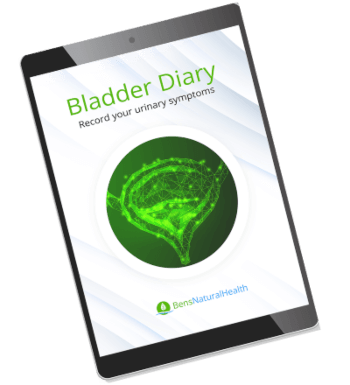Medical professionals define neurogenic bladder as urinary dysfunction caused by neurological damage.
It can result in the inability to control when or how often urine is released or the inability to empty the bladder.
To hold urine until you’re ready to empty, various muscles and nerves work together in your bladder.
Messages are sent between the brain and the muscles that regulate bladder emptying.
However, if these nerves become damaged from illness or injury, the muscles may not be able to contract or relax at the appropriate times.
This condition is referred to as neurogenic bladder, and it can disrupt the coordination between the nerves and muscles, causing the bladder to fill or empty incorrectly.
Understandably, it may be uncomfortable or embarrassing when discussing such topics, but seeking medical help is essential.
This article will give an overview of the signs, symptoms, causes, diagnosis, treatment options, lifestyle changes, and potential outcomes of neurogenic bladder.
What is a neurogenic bladder?
A neurogenic bladder does not function properly due to neurological damage. Neurogenic bladder is when there is a problem with the bladder due to damage to the nervous system caused by illness or injury.
To understand it better, one must comprehend how the urinary system functions.
The urinary system is responsible for removing waste products from the body. It comprises the kidneys, ureters, bladder, and urethra.
It is also responsible for holding and releasing urine in a controlled way. The nervous system regulates this function.
The bladder is a muscular organ that expands as it fills with urine. The bladder muscles contract when it reaches a certain level, and urine is released through the urethra.
The ability to control urination is dependent on the intricate coordination between the nervous system and urinary system muscles.
When the nerves that control the urinary system are damaged or malfunctioning, it can cause problems with urination which may manifest as various signs and symptoms.

What are the types of neurogenic bladder?
There are various ways to classify the neurogenic bladder, but the resulting bladder control issues can be categorized into two main types.
The first type occurs when the nerves are damaged in a way that causes the bladder to become overactive. This can manifest as spasticity or hyper-reflexivity.
The second type occurs when the nerves are damaged in a way that causes the bladder to become underactive. This can manifest as flaccidity or hypotonicity.
It’s important to understand the specific type of neurogenic bladder you’re dealing with to determine the best course of treatment.
Neurogenic bladder vs UTIs
Some people associate neurogenic bladder, UTIs, and other infections. Neurogenic bladder and urinary tract infections (UTIs) are two different conditions that can affect the urinary system.
Neurogenic bladder is caused by nerve damage or disease and affects the bladder’s normal function.
However, failure to manage a neurogenic bladder can cause complications such as urinary tract infections and kidney damage.
On the other hand, UTIs are caused by bacterial infections in the urinary tract. Although neurogenic bladder and UTIs can affect the urinary system, they have different causes, symptoms, and treatments.
Neurogenic bladder and urinary tract infections (UTIs) can share some common symptoms, such as increased frequency of urination and urgency to urinate. However, it is essential to note that these symptoms can also indicate other conditions.
A healthcare provider can help differentiate between the neurogenic bladder and UTIs by taking a thorough medical history, performing a physical exam, and ordering diagnostic tests.
What are the symptoms of neurogenic bladder?
The symptoms and severity of neurogenic bladder depend on where and how much neurological damage has occurred.
As a result, the signs and symptoms can differ significantly based on the severity and root cause.
Some typical indications may include the following:
- Urinary incontinence
- Urinary urgency
- Difficulty in fully emptying the bladder
- Trouble starting or stopping urination
- Frequent urinary tract infections (UTIs)
- Pain or discomfort during urination
- Lower back pain
Individuals may encounter a persistent leakage of urine, whereas others may notice an accelerated build-up of urine in their bladder, resulting in frequent visits to the restroom.
In extreme cases, urinary retention may arise, potentially leading to harm in the bladder or kidneys if not given medical attention.
Get your FREE bladder diary
- Daily bladder diary
- Better understand your urinary symptoms
- Step-by-step guide
Causes and risk factors
Neurogenic bladder is usually caused by one of two things:
- neurological disorders that cause damage to nerve cells due to trauma
- illness and inflammation that affects the surrounding tissue and nerves responsible for regulating urination
Multiple sclerosis (MS) is one primary illness causing this type of disorder due to the destruction of the myelin sheath protecting neurons within the brain’s spine, preventing signals from reaching destinations properly, and disrupting typical functioning organ systems, including the urinary tract.
Other examples include traumatic spinal cord injury (SCI), strokes, amyotrophic lateral sclerosis (ALS), cerebral palsy, Parkinson’s Disease, Alzheimer’s Disease, diabetic peripheral autonomic dysfunction, spina bifida, and congenital disabilities that affect the central nervous system resulting in genetic mutations during fetal development all potentially contributing factors behind onset neurogenic bladder.
Risk factors for neurogenic bladder may include a history of spinal cord injury or certain neurological conditions such as multiple sclerosis or Parkinson’s disease.
Diagnosis
If you are experiencing any of the symptoms of neurogenic bladder, your doctor will likely perform a physical exam and ask for a detailed medical history and imaging scans to assess internal health structures.
Diagnosing neurogenic bladder involves a series of tests conducted to identify underlying medical conditions triggering problems will evaluate the extent of damage done.
Some tests the doctor may order include the following:
- X-rays of the skull and spine. This imaging test uses invisible energy beams to make images of tissues, bones, and organs.
- Imaging tests of the bladder and ureters
- Ultrasound (also called sonography). This uses high-frequency sound waves to create images of the organs on a computer screen.
- Cystoscopy. Your healthcare provider puts a thin, flexible tube and viewing device in through the urethra to examine the urinary tract. It checks for structure changes or blockages, such as tumors or stones.
- Tests that involve filling the bladder, such as urodynamics. These tests show how much the bladder can hold and check to see if it fully empties.

Treatment options
Neurogenic bladders can severely affect those who suffer from them. Due to their inability to control urges, they experience physical discomfort associated with incomplete bladder emptying, which may result in infections.
Because they fear an episode occurring at any time without warning, signaling a loss of control over their body functions, related activities such as sports and socializing become problematic.
In light of this, knowing the treatment of neurogenic bladders and ways to cope with daily life while managing symptoms is essential.
Treatment options for neurogenic bladder depend on the underlying cause, the severity of the condition, and individual patient needs.
Here are some standard treatment options:
Medications
Certain medications can help manage the symptoms of neurogenic bladder. These may include:
- Anticholinergics: to relax the bladder muscles
- Beta-3 agonists: to stimulate bladder muscle contractions, ease urination urge and increase
- Alpha-blockers: to relax the urethra muscles
- Antibiotics: to treat or prevent urinary tract infections.
Catheter
Catheterization involves emptying the bladder using a thin catheter tube. This can be done intermittently (inserted and removed as needed) or through an indwelling catheter (which remains in place continuously).
Another option is a suprapubic catheter inserted through the abdomen into the bladder.

Bladder augmentation
This surgical procedure enlarges the bladder by attaching a piece of the intestine to it, which can help increase the bladder’s capacity and reduce pressure.
Electrical stimulation
This treatment uses electrical currents to stimulate the nerves controlling the bladder and improving bladder function.
This can include sacral nerve stimulation (SNS) or percutaneous tibial nerve stimulation (PTNS).
Botox injections
Injecting botulinum toxin (Botox) into the bladder muscle can help relax the muscle and improve bladder function in some cases.
Behavioral therapies
Techniques such as bladder retraining, pelvic floor exercises, and biofeedback can help improve bladder control and manage symptoms.

Management of underlying conditions
Addressing the underlying cause of neurogenic bladders, such as spinal cord injuries or neurological disorders like multiple sclerosis, can help manage symptoms.
When it comes to managing a neurogenic bladder, seeking the guidance and expertise of a healthcare provider is essential.
With their help, individuals can work out the most effective treatment plan that considers their specific needs and medical history.
By collaborating with a healthcare provider, patients can feel more confident and empowered in their journey toward better bladder health and overall well-being.
Outcomes
The potential outcomes of neurogenic bladder vary depending on the underlying cause and severity.
However, with proper diagnosis and treatment, many individuals with a neurogenic bladder can manage their symptoms and maintain a good quality of life.
It is important for individuals experiencing symptoms of a neurogenic bladder to consult with a healthcare provider to determine the best course of treatment for their specific condition.
5 lifestyle changes
Making lifestyle changes can be a great way to improve bladder control because certain lifestyle factors can trigger or worsen many urinary symptoms.
For example, being overweight or inactive can weaken the pelvic floor muscles, contributing to urinary incontinence.
By making healthy lifestyle choices, such as maintaining a nutritious diet, staying physically active, and quitting smoking, individuals may reduce their risk of developing bladder control problems or improve their symptoms if they already have them.
Here are some practical steps you can follow:
1) Scheduled voiding
One of the most effective ways to do this is by taking regularly scheduled bathroom breaks. This allows you to empty your bladder before it becomes too full and you start to feel the urge to go.
Establishing a regular schedule for emptying your bladder can help reduce the risk of accidents and minimize bladder-related discomfort.
2) Fluid management
Drinking the right amount of fluids can help manage urinary symptoms. It’s essential to consult a healthcare provider to determine how much fluid intake is appropriate for your condition.

3) Pelvic floor exercises
Strengthening the muscles that control urination can help improve bladder control and reduce the risk of accidents.
These Kegel exercises can be done at home and help you gain more control over your bladder over time.
4) Dietary changes
Certain foods and drinks can irritate the bladder and worsen urinary symptoms. Avoiding caffeine, alcohol, spicy foods, and citrus can help manage neurogenic bladder.

5) Clothing modifications
Wearing loose-fitting clothing can help reduce pressure on the bladder and make it easier to manage urinary symptoms.
Conclusion
Neurogenic bladder is a condition that affects bladder function due to nerve damage or disease. Symptoms can include urinary incontinence, urinary retention, and urinary tract infections.
Diagnosis involves a combination of medical history, physical exam, and diagnostic tests. Treatment options include medication, catheterization, surgery, and lifestyle changes.
With proper management and treatment, individuals with a neurogenic bladder can improve their quality of life and prevent complications such as kidney damage.
Working closely with healthcare providers to develop a personalized treatment plan is essential.
Explore More







